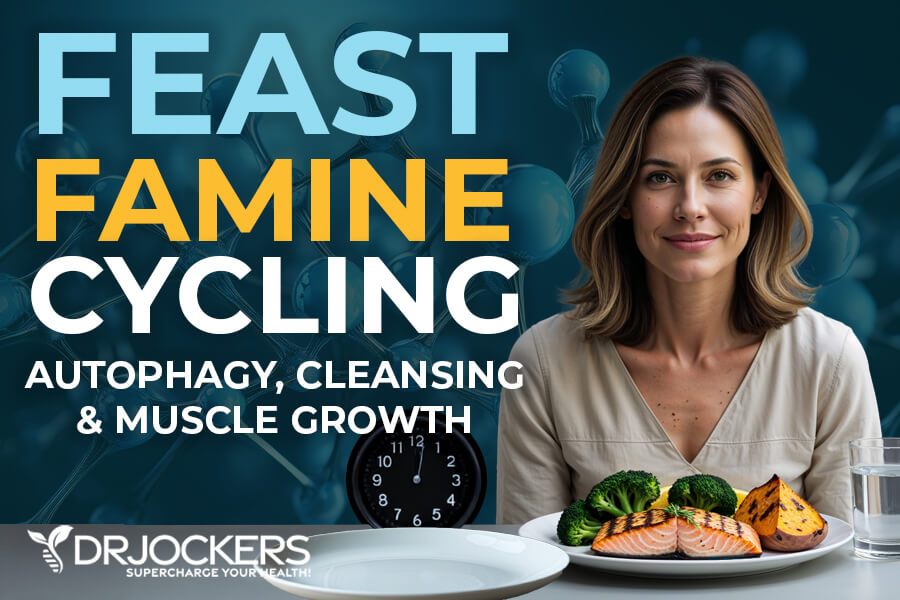 Feast Famine Cycling: Autophagy, Cleansing and Muscle Growth
Feast Famine Cycling: Autophagy, Cleansing and Muscle Growth
Feast famine cycling is an eating concept derived from our ancestral roots. More and more people are interested in fasting for its health benefits. However, many forget about the importance of feasting.
While fasting certainly has a number of health benefits, including fat burning, reduced inflammation, and improved energy levels, prolonged calorie restriction also has a downside to it, including potential hormonal imbalance. This is why feasting is so important.
Through feasting, you can nourish your body with nutrient-dense foods. Feast-famine cycling can help regulate cell growth and cleansing pathways, create hormonal optimization, boost lean body tissue development, better inflammation and immune activity, and enhance mental health and emotional well-being.
In this article, you will learn about the benefits of fasting, the importance of feasting, feast-famine cycling, and hormone balancing. You will also learn how to implement feast-famine cycling to receive full benefits from your fasting lifestyle.
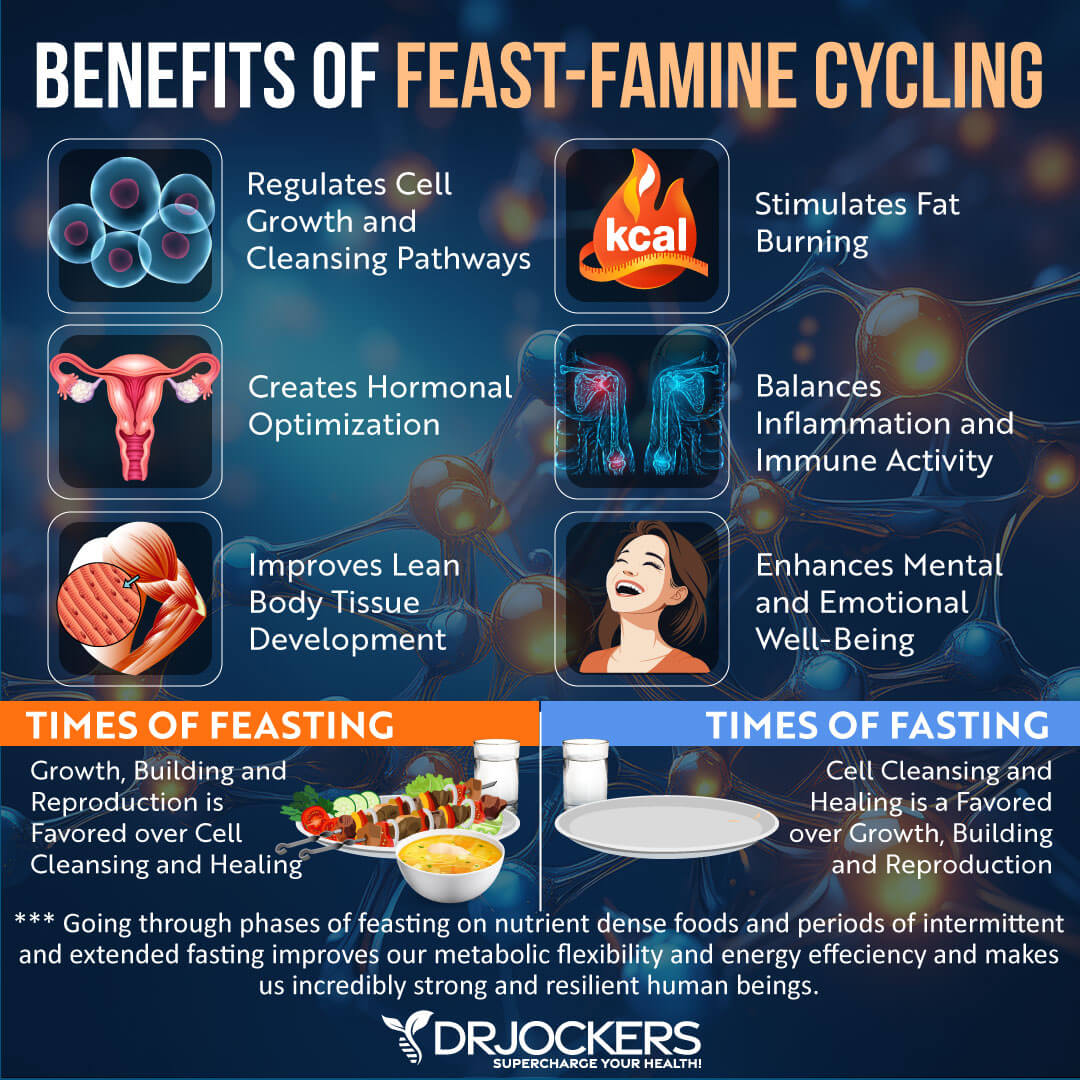
Benefits of Fasting
Regular fasting and intermittent fasting can have incredible benefits for your health. It can improve your life physically, mentally, emotionally, and spiritually.
Some of its top benefits include:
- Stimulating fat burning (1, 2, 3, 4)
- Improving energy levels (5, 6)
- Reducing inflammation (7)
- Taking stress off the digestive system (8)
- Stimulating cellular autophagy (9)
- Improving genetic repair mechanisms (10)
- Stimulating the development of stem cells (11, 12)
- Improving insulin sensitivity (13)
- Reducing the risk of chronic disease (14)
- Improving your relationship with food
- Enhancing mental health (15)
- Spiritual growth and fine-tuned intuition
To learn about the benefits of fasting in more detail, read this article.
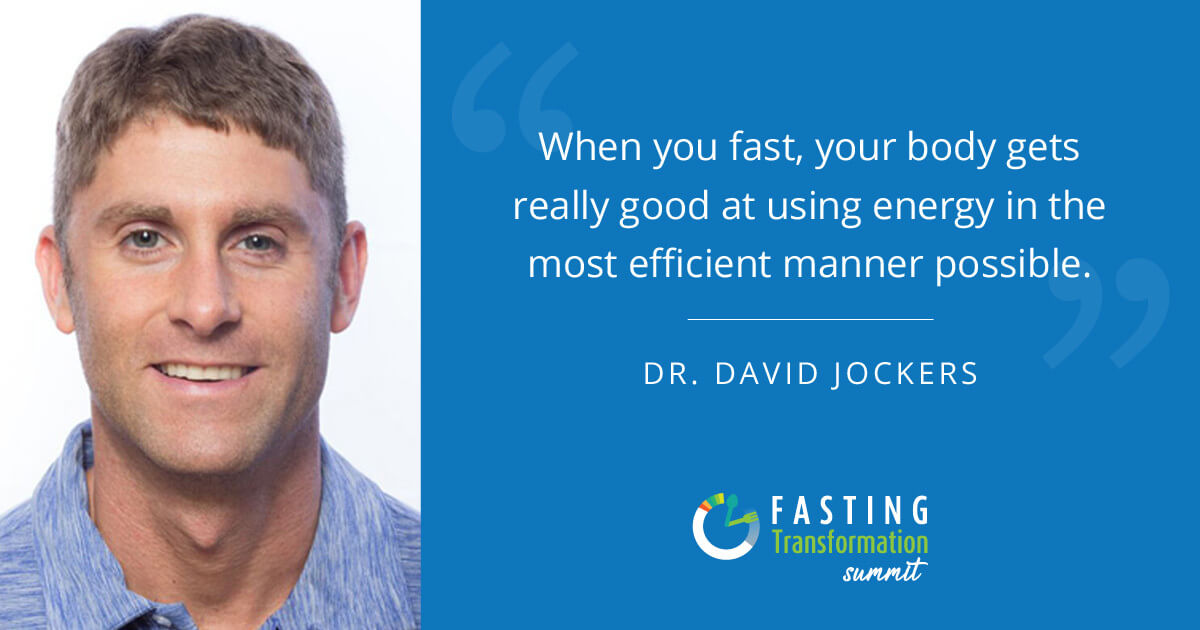
Why Feasting is Just as Important
While fasting is a highly effective way to stimulate autophagy, you have to remember that feasting is just as important. Too much autophagy can become a problem as well. You need to stimulate the mTOR and insulin pathways to produce energy regularly. Long-term calorie restriction can lead to too much autophagy, which can result in muscle wasting, as well as compromised thyroid and sex hormone activity (16).
Feast-famine cycling can help to regulate cell-growth and cleansing pathways, create hormonal optimization, improve lean body tissue development, balance inflammation, and immune activity, and enhance mental health and emotional well-being. Fasting is a time for cell cleansing and healing, whereas feasting is a time for growth, rebuilding, and reproduction.
Our ancestors went through a feast and famine cycle regularly and it is literally built into our DNA. Our ancestors didn’t purposely fast but simply didn’t eat when food wasn’t available during a famine. However, they feasted or ate until they were full when food was available.
Back in the day, refrigeration and other modern food storage techniques were not available, and they never knew when the next meal would come. Since food wasn’t always guaranteed, and they would frequently have to go without food for days, your ancestors used the opportunity to feast and rebuild their energy from nutrient-dense food whenever they could.
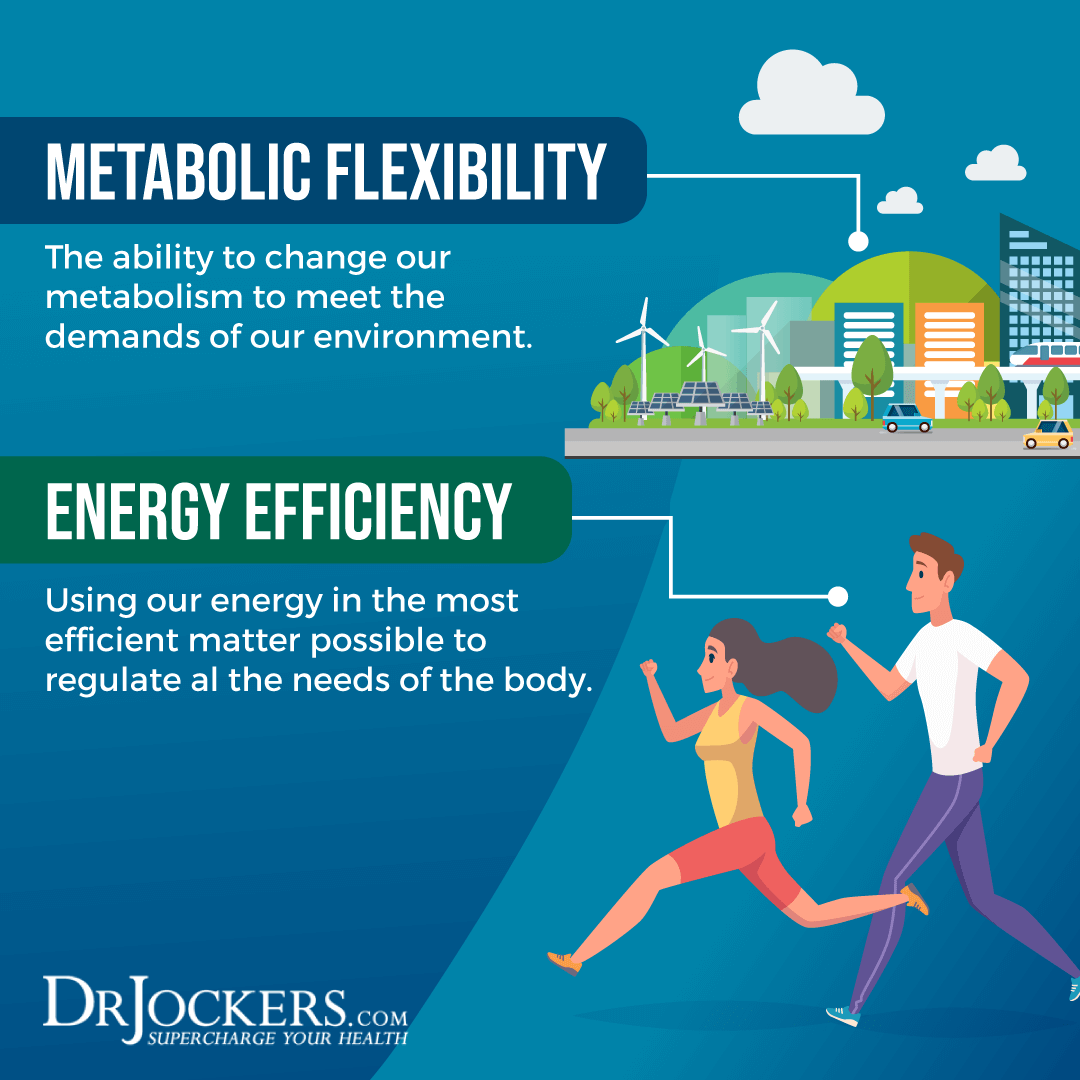
Cycling Through Feast Famine Periods
Intermittent fasting and other forms of fasting utilize your body’s ancient wisdom in your DNA carried on from your ancestors. If you want to take care of your body the way it was designed to, through fasting, it is important that you are equally focusing on both fasting and feasting.
When you are feasting on healthy, nutrient-dense foods, you flood your body with the essential nutrients it needs to repair and create health. You stimulate metabolic pathways that are needed to burn fat for fuel and have proper lean body tissue development.
What you need to remember is that you need to create a healthy balance between fasting and feasting. When you are fasting, fast, don’t cheat with small snacks here and there. However, when it’s time to eat, feast until you are full and satisfied. Don’t overeat, but don’t limit yourself. Satisfy and nourish your body with much-needed nutrients from healthy foods.
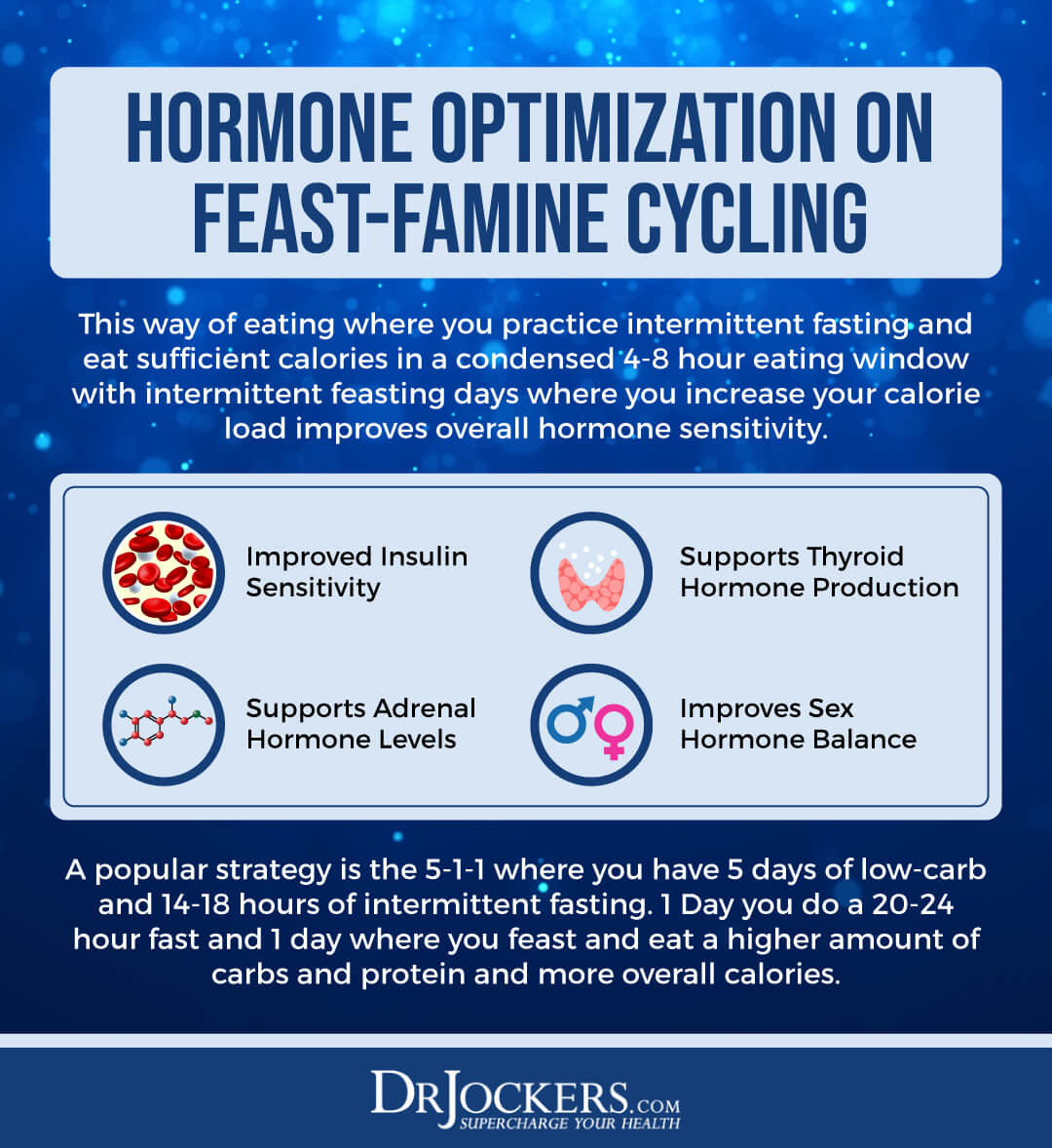
Feast Famine Cycling and Hormone Balance
When you are practicing intermittent fasting, it is essential that you practice feast-famine cycling for hormone balance. Prolonged calorie restriction can be hard on your body and disrupt your hormones, including your insulin, thyroid, adrenals, and sex hormones. Feasting can show your body that it’s safe and prevent hormonal problems.
Insulin
Continuously stimulating your insulin hormones is not ideal, instead, you want to raise it strategically. You don’t want your body to think that it’s starving long term. Raising your insulin levels strategically through feast-famine cycling tells your body that you are not in starvation mode. This can help to convert inactive T4 and active T3 thyroid hormones as well and create a healthy balance within your body.
Thyroid
Prolonged calorie restriction can be stressful on your body. It can lower active thyroid hormone levels, slow your metabolism, and cause hypothyroid symptoms. On the other hand, feast-famine cycling can help your body balance this problem and maintain optimal thyroid functions (17).
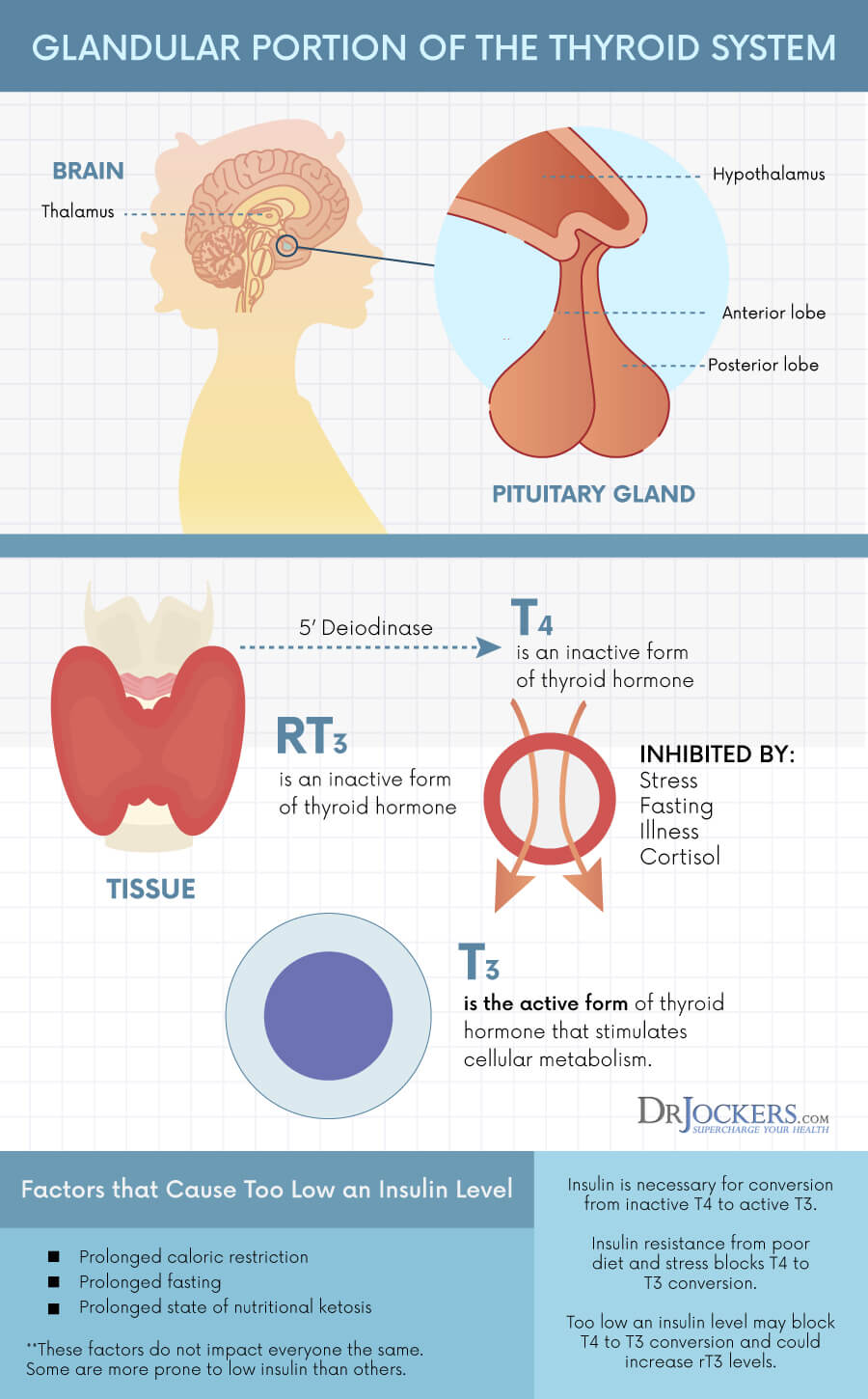
Adrenals
Prolonged calorie restriction can make your body release more cortisol than normal, thus putting more stress on the body, and leading to elevated cortisol levels, sleep problems, fatigue, slow recovery, muscle fasting, and adrenal fatigue. Feast-famine cycling can help your body to balance your hormone levels and prevent adrenal fatigue (17).
Sex Hormones
Prolonged calorie restriction puts stress on your body and may tell the body that the conditions are not good to reproduce. To protect your body and prevent the development of a future baby under unsafe conditions, your hormone levels may decline. Female bodies are particularly sensitive to calorie restriction and restrictive diets.
When your sex hormones are not functioning well, they cannot communicate with the ovaries in females, which may result in irregular periods, amenorrhea, infertility, poor bone health, and reduction in ovary size. Underproduction is sex hormones can cause a loss of lean body tissues, libido, and mental and physical drive in all sexes (18, 19, 20, 21).
Feasting intermittently helps your body understand that food is prevalent, it is available at regular cycles, and the conditions are good. It helps you to get the full benefits of reduced inflammation and increased autophagy through a feast and famine cycle with proper hormone balance for mental and physical performance.
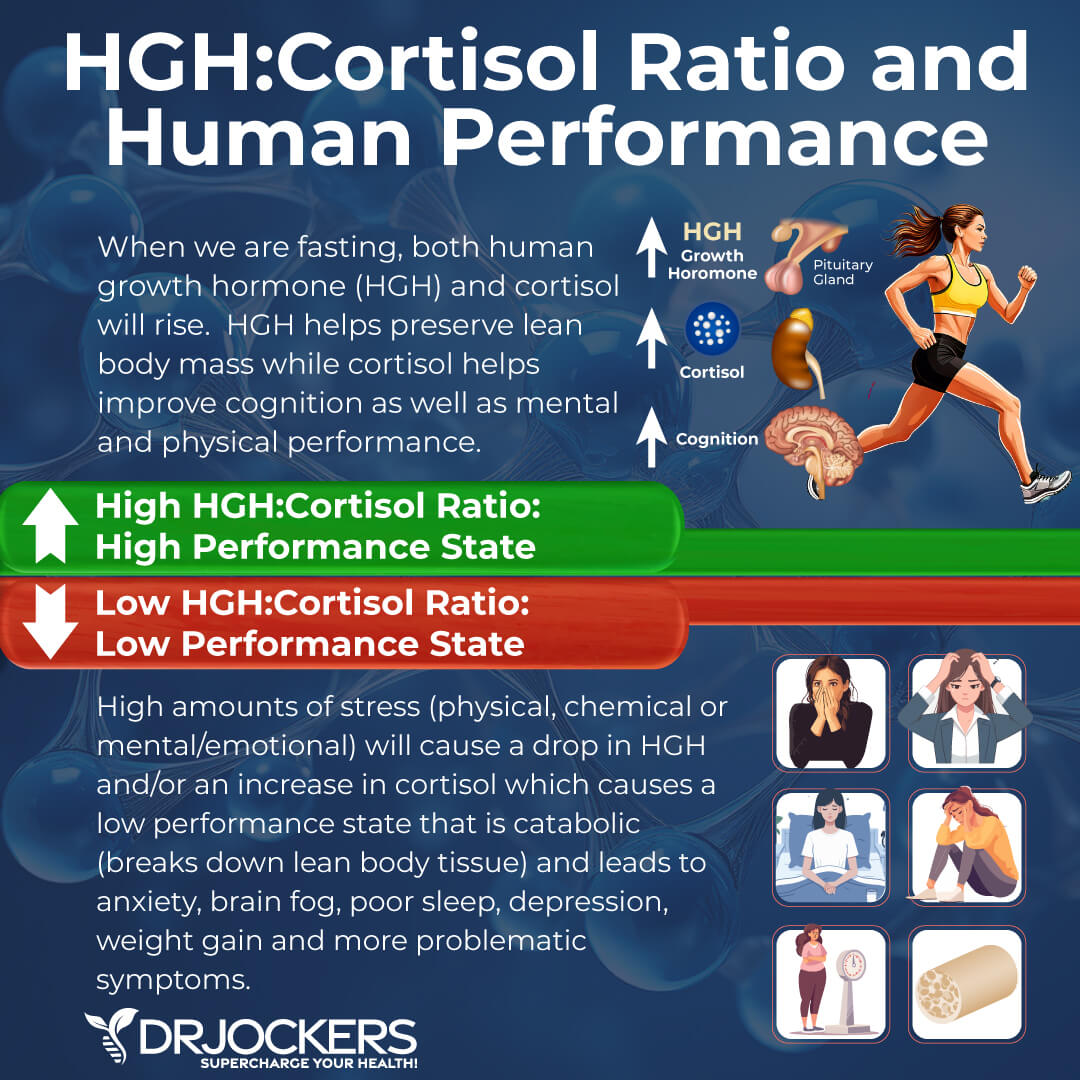
How to Implement Feast Famine Cycling
When you are practicing intermittent fasting, it is important that you remember that the goal is not necessarily to eat less overall, just to simply eat less often. I’m not a fan of counting calories. It is better to listen to your body’s cues and needs and fill up on nutrient-dense foods until you are satisfied.
However, if you find that you are struggling with this approach, it may be helpful to know that you are under or overeating with the help of temporary calorie counting.
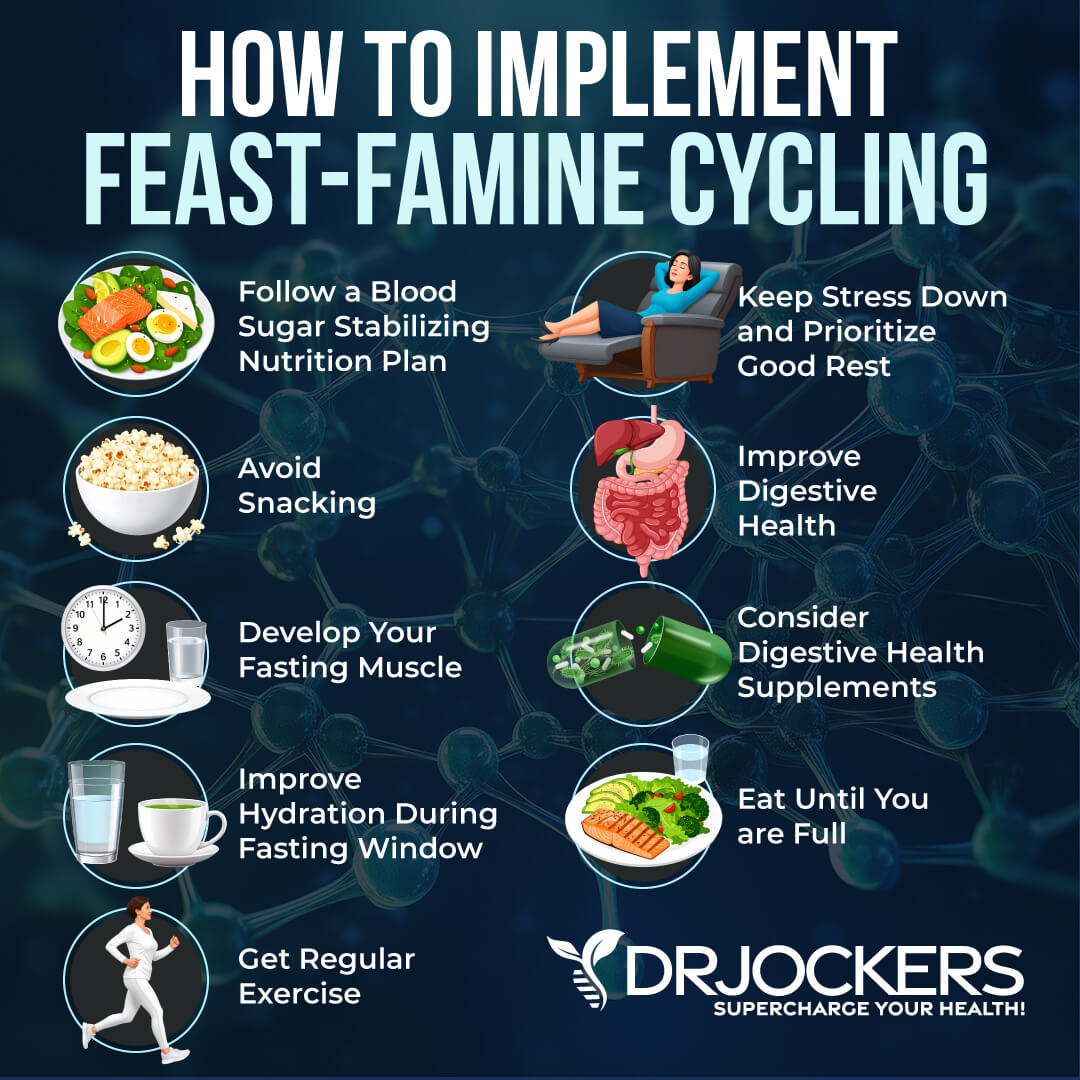
Gently Move into a Ketogenic Lifestyle to Improve Metabolic Flexibility
The ketogenic or keto diet is a diet high in healthy fats and very low in carbohydrates. It is a safe and effective way to lower inflammation, improve metabolic flexibility, shed body fat, prevent diabetes, improve your energy, and better your overall health. However, when people implement it improperly and too quickly, it can lead to something called the keto flu (22, 23).
Your body has been burning sugar their entire life, hence it may have a poor ability to burn fat at the cellular level. Jumping into keto too quickly can put you in a limbo where your blood sugar levels are too low but you can’t effectively burn fat for energy yet. This can lead to a variety of unwanted side effects we refer to as keto flu, such as low energy, dizziness, and more.
However, if you adopt the keto diet slowly, you can avoid these side effects and improve your metabolic flexibility. Even if you are completely new to keto, this gradual approach of shaving off carbs slowly allows your body to fat-adapt effectively.
During your first week on keto, reduce your carbs during the daytime and focus on a healthy fast instead. In the evening, you can add some healthy carbs, such as one sweet potato or one cup of carrots. In the second week, reduce your evening carb intake by half to half a sweet potato or half a cup of carrots. For the next two weeks, stick to 70 percent fat, 25 percent protein, and 5 percent carbs in your diet. With this gradual approach, you will be set to live a ketogenic lifestyle.
You can learn more about the keto metabolic makeover and how to start a ketogenic lifestyle gradually in this article. Over time, you can implement carb cycling strategies after you have developed the metabolic machinery to get into ketosis.
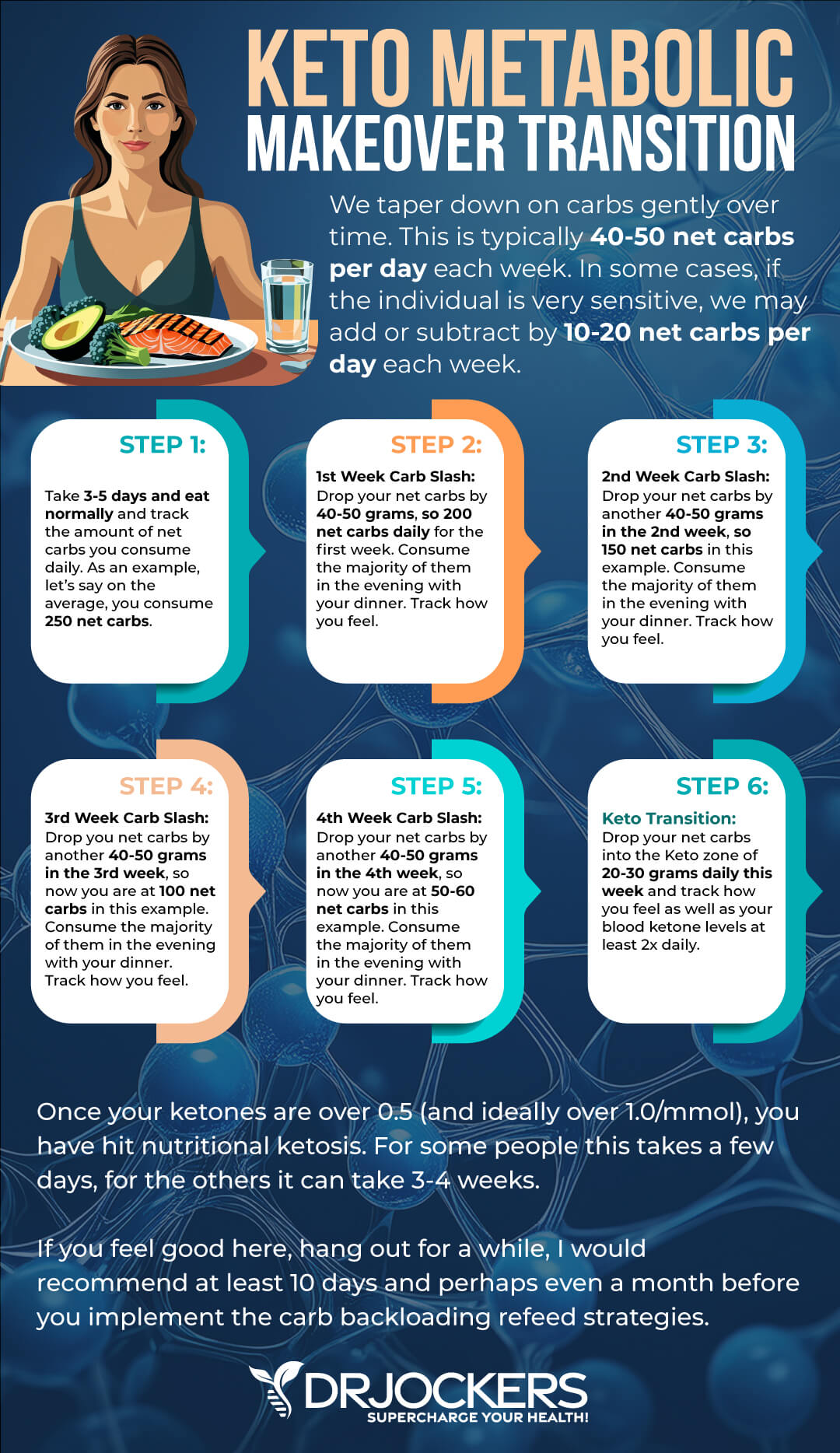
Avoid Snacking
The feasting and famine cycle is a way to tap into your body’s wisdom and improve your health. Your ancestors didn’t have snacks handy either during a famine, nor should you snack during the fasting cycle.
Your fast is a period to improve autophagy and cellular renewal. If you reach for snacks during your fasting window, you are essentially breaking your fast. This can lead to blood sugar issues, and digestion problems, and you won’t be able to experience the benefits of your snack.
You should also avoid snacking during your feasting period. Depending on the type of intermittent fasting you are practicing, you may have one, two, or even three meals during your feasting period. In order to meet all your nutrient needs from high-quality foods, it is best to eat enough during your meals, so you don’t go hungry in between.
If you are feeling hungry between meals or during your fasting window, it is a good idea to look at your caloric and nutrient intake and adjust it accordingly to avoid under-eating.
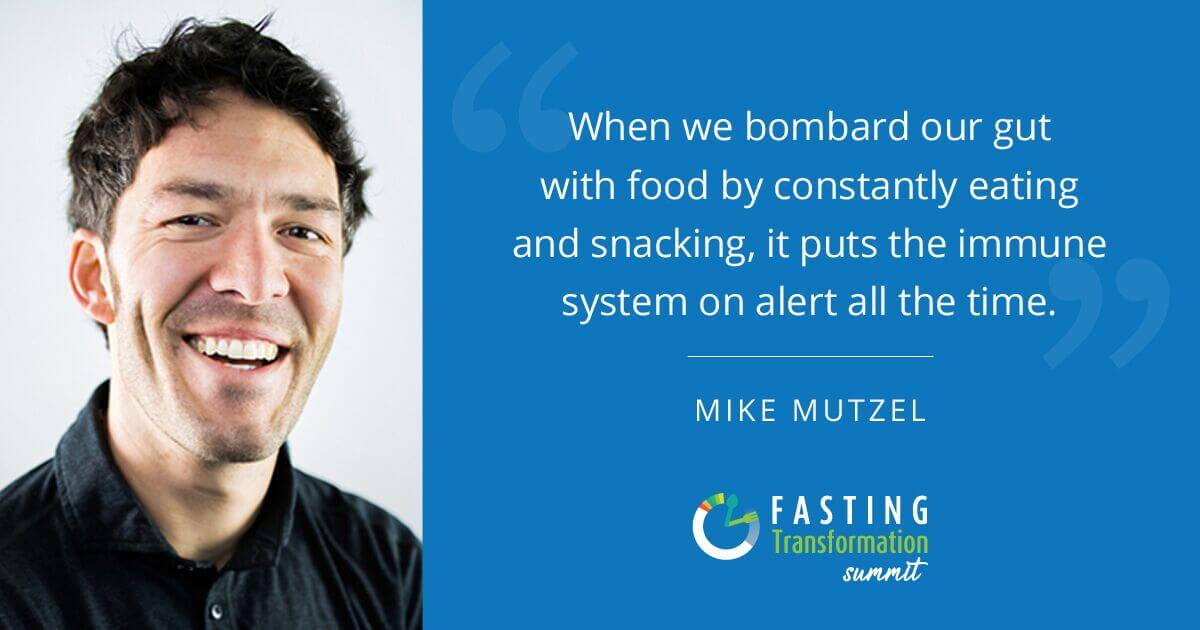
Develop Your Fasting Muscle
If you’ve been used to eating three meals and three snacks a day and eating late at night, an advanced fasting regimen can be a shock to your body. Teaching your system to thrive through feast-famine cycling is similar to beginning a new exercise program. It has taken time to become adapted to fasting, and a gentle, gradual approach is key to developing your fasting muscle and creating a new routine.
I recommend that you start gently and get used to fasting gradually. Instead of jumping into OMAD (one meal a day) a 2 or 3-day water fast, start with a Simple Fast with a shorter, 12-hour fasting window. Once that becomes easy for you, you can reduce your eating window and add more fasting days to your weekly schedule using Crescendo or Cycle Fasting. Gradually tighten your eating window as long as you feel good. If you are ready, you can eventually move up to a daily intermittent fasting schedule.
You can learn more about Simple Fasting, Cycle Fasting, and other intermittent fasting strategies here. For women, I recommend Crescendo Fasting, which you can learn about in this article. Additionally, if you want a more detailed understanding of a step by step guide, I highly recommend my Fasting Transformation Quickstart Program.

Improve Hydration During Fasting Window
Proper hydration is absolutely critical during your fasting window. During your fast, your body will lose a lot of water when using up stored glycogen in your muscles and liver. As your insulin levels drop, you may use more water and sodium than normal. If you get dehydrated during your fasting window, you are more likely to feel tired, dizzy, achy, and constipated.
I recommend that you drink 32 oz water upon waking during the morning of your fast and drink continuously during the day. Adding a pinch of Celtic salt to your water is helpful to replenish your electrolytes. Adding some lemon or lime to your water adds extra vitamins and minerals and helps detoxification and digestion.
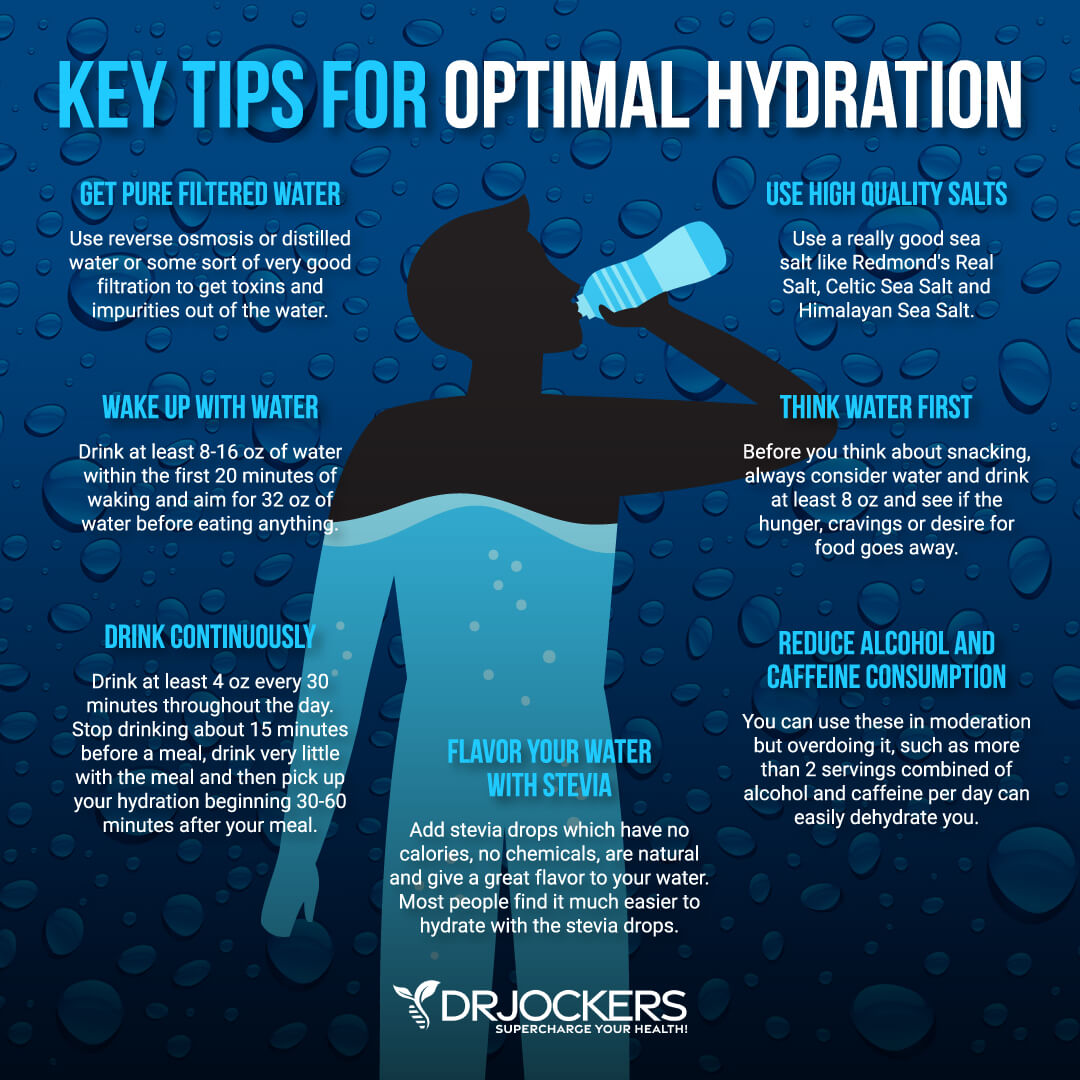
Regular Exercise
Regular exercise can enhance the benefits of intermittent fasting. Regular movement can help you build muscles, improve your flexibility, improve your cognitive ability, boost your mental health, and reduce your risks of various diseases, such as Parkinson’s disease, multiple sclerosis (MS), and cancer (24, 25, 26, 27, 28).
Strength training, such as weightlifting and body weight exercise can help you to build and hold onto your muscle. Resistance training can improve your strength, flexibility, and motor control. High-intensity training (HIIT), interval training, circuit training, and sprints are a fantastic way to increase your muscle mass.
HIIT is particularly great because it combines cardio and strength training in one short workout. During your fasting window, I recommend sticking to low-impact exercises, such as yoga, Pilates, and light walks.
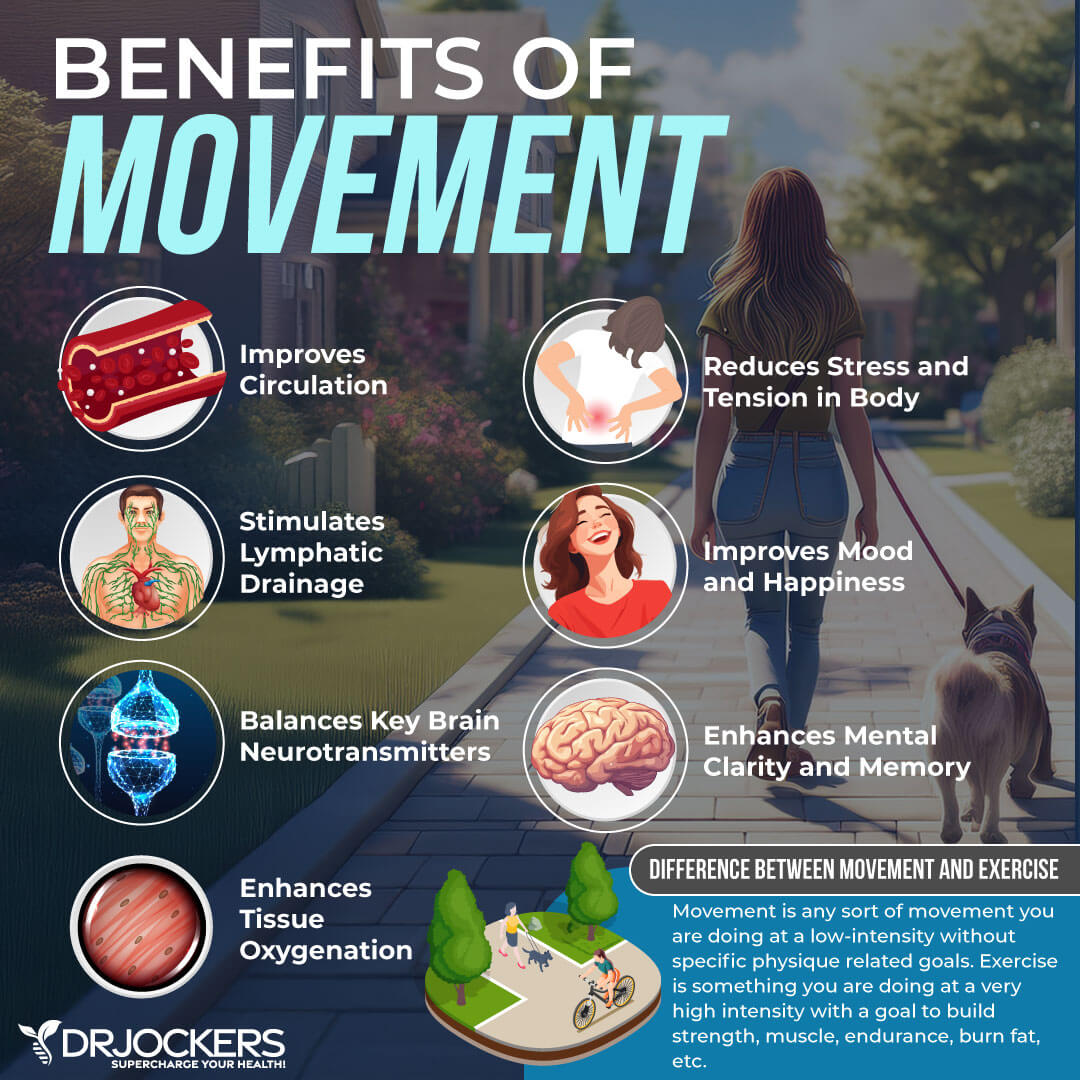
Keep Stress Down and Prioritize Good Rest
Keeping your stress levels down and prioritizing good rest is essential to benefit from feast-famine cycling. While you are sleeping and resting, your body gets a chance to repair, recover, and renew. When you are sleep-deprived, stressed, and tired, it becomes increasingly difficult for your body to renew itself. Stress, fatigue, and a lack of sleep can also raise your cortisol levels which makes it difficult for your body to feel calm, lose weight, gain muscle mass, repair damage, and fight disease (29).
Make sure to get 7 to 9 hours of sleep at night. Find some downtime and time to relax during the day if possible. Don’t overtrain your body. Meditate, spend time in prayer, use relaxation audios, learn breathing exercises, journal, spend time in nature, practice gratitude, spend quality time with your loved ones, and engage in activities that you enjoy.
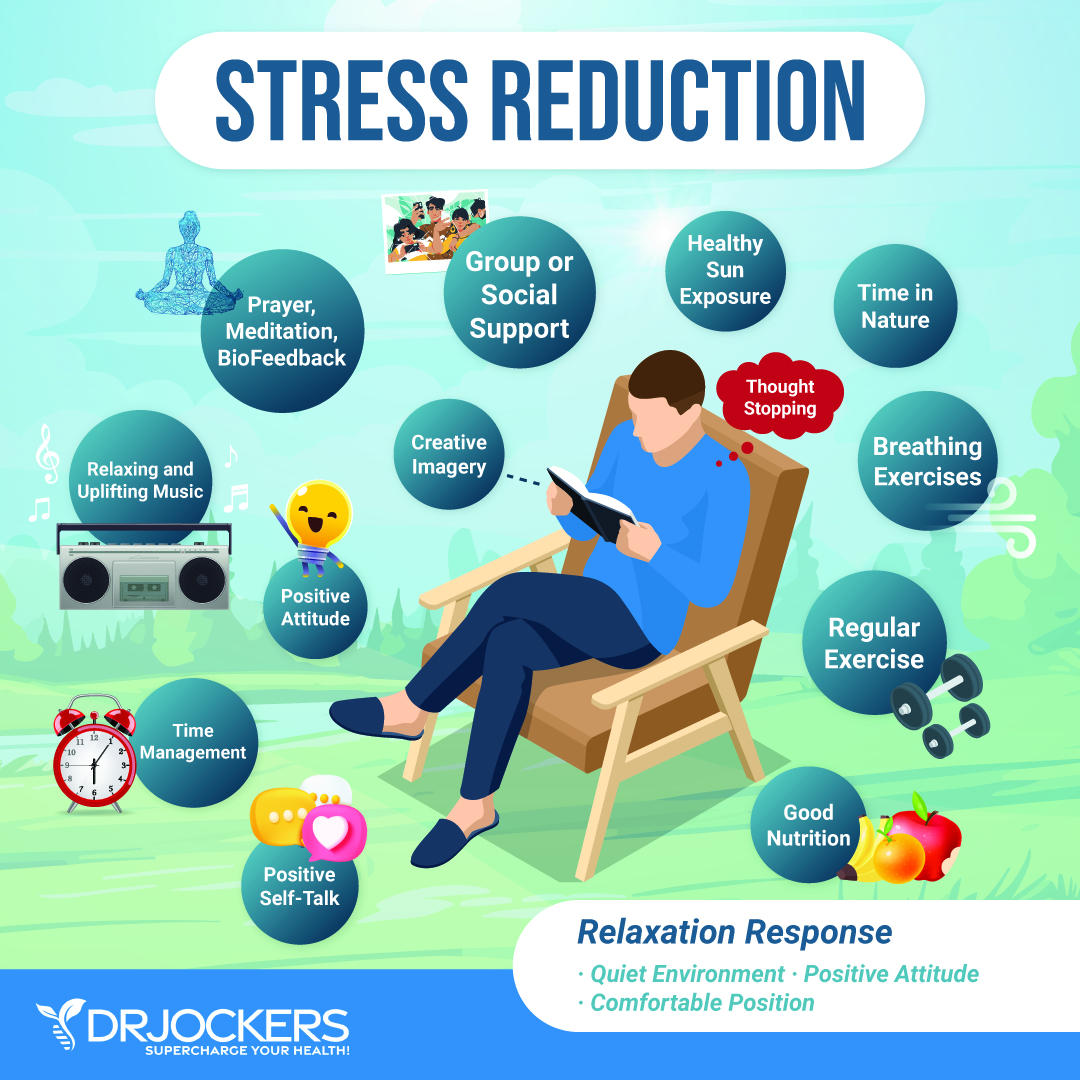
Improve Digestive Health
If you are used to eating smaller meals or snacking throughout the day, feasting during a shorter eating window than before may be difficult on your digestive system at first.
If you’ve been dealing with digestive problems or have been living on too much junk food with refined sugar and refined fats, chances are your digestion needs a bit more support to function optimally during the feast-famine cycle. I recommend that you support your digestive system with some high-quality herbs and supplements.
Eating high fiber foods, such as nuts, seeds, greens, and non-starchy vegetables can help you to be regular if constipation is a concern. Bitter herbs, such as ginger, parsley, fennel, basil, thyme, and oregano are a fantastic way to stimulate your digestive juices.
Add them to your cooked meals, salads, and green smoothies, and look for supplements with them. Drinking apple cider vinegar (ACV) mixed with water or lemon water before meals can enhance digestion and absorption, and reduce the risk of bloating and acid reflux.
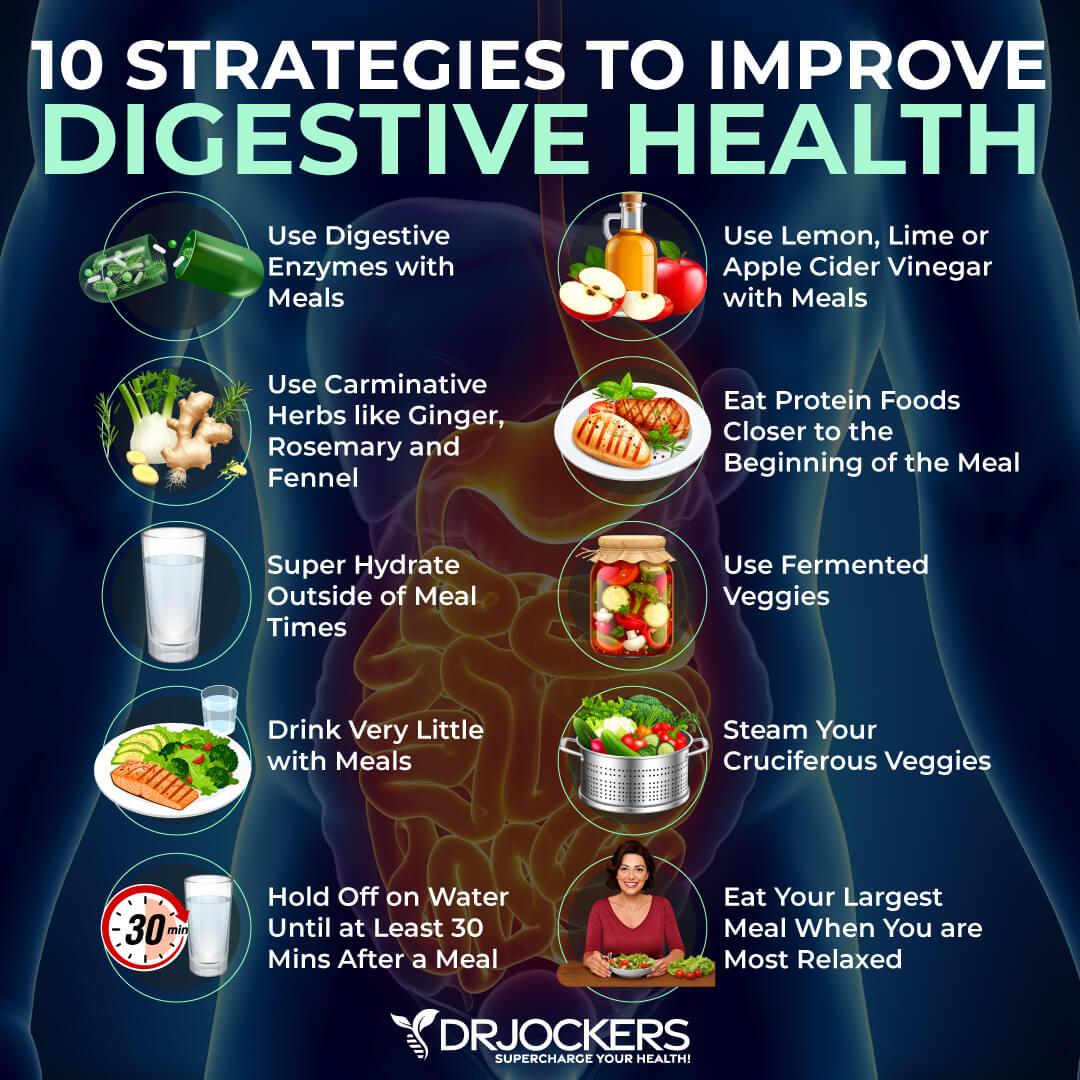
Consider Digestive Health Supplements
It is important that you support your digestive system with some high-quality supplements when feasting. Taking digestive enzymes can help your body digest your food and absorb your nutrients more easily and more effectively. I recommend taking Super Dzyme which is a powerful group of plant based enzymes to help the body digest and assimilate nutrients better. Consider the use of the use of stomach acid support, such as Acid Pro-Zyme if eating meat gives you digestive challenges to lower the risk of acid reflux and indigestion.
If you have trouble digesting fat, use Bile Flow Support™ and Super Digest HCL. Bile Flow Support is a specialized liver support formula that provides nutrients involved in bile flow and fat metabolism, including choline, taurine, and methionine. Super Digest HCL is a blend of hydrochloric acid (HCl), pepsin, pancreatic enzymes, and ox bile and promotes the digestion of proteins, carbohydrates, and fats. Lastly, if you have no gallbladder consider eating a few smaller meals in your eating window to reduce the risk of digestive troubles while transitioning to feast-famine cycling.
We know that stress is the antagonist to good digestive juice production and is the biggest factor to causes digestive challenges. It is important to be in a relaxed state when you consume your meal so that your body can produce the digestive juices it needs.
Eat Until Full: Eat Until You Are Full When Eating
It is important that you eat until you are full when you are practicing feast-famine cycling. Overeating can lead to uncomfortable symptoms during your fast, including digestive troubles and fatigue while undereating can lead to unwanted weight loss, hormonal issues, and other health problems.
Undereating can also make it difficult to stick to feast-famine cycling as you will feel weak, lose too much weight, and have cravings. If you are already at a healthy weight and you are under-eating, you will probably notice fatigue, muscle loss, and thyroid and adrenal issues. It is important to eat until you are full and satisfied, it is really as simple as that.
Signs of Overeating
Some signs that you may be overeating include:
- Bloating
- Indigestion
- Nausea after meals
- Significant fatigue after meals
- Mental fatigue after meals
- Weight gain

Signs of Undereating
Some signs that you are under-eating include:
- Hunger and cravings only a few hours after a meal
- Ongoing cravings
- Too much weight loss
- Fatigue and brain fog between meals
- Feeling better after meals than while fasting
It is important to pay attention to your body’s cues for signs of overeating and under-eating. While I’m not a fan of calorie counting, it may help you to avoid over- and under-eating and discover the happy amount for your body.

To Avoid Overeating and Undereating:
- Eat nutrient-dense foods to nourish your body and avoid cravings for unhealthy foods that you may be tempted over eat on.
- Pay attention to your portion sizes.
- Pay attention to your body’s cues. Eating until you are satisfied, but stop before you feel uncomfortably full. It may take some practice to get in touch with your body’s wisdom.
- Avoid distractions, such as watching TV, playing on your phone, working on your computer, or running errands. Sit down and focus on your meal to allow your mind, body, and soul to be fully aware of when you’re full and satisfied.
- Eat mindfully. Chew your food.
- Hydrate well throughout the day. Your body can mistake thirst for hunger, and dehydration may lead to overeating.
- Fast during your fasting window. Avoid snacking and cheat meals.
- Plan your meals ahead of time.
- Keep a food journal for a temporary period to notice any positive or negative habits, and health symptoms before, after, and during meals.
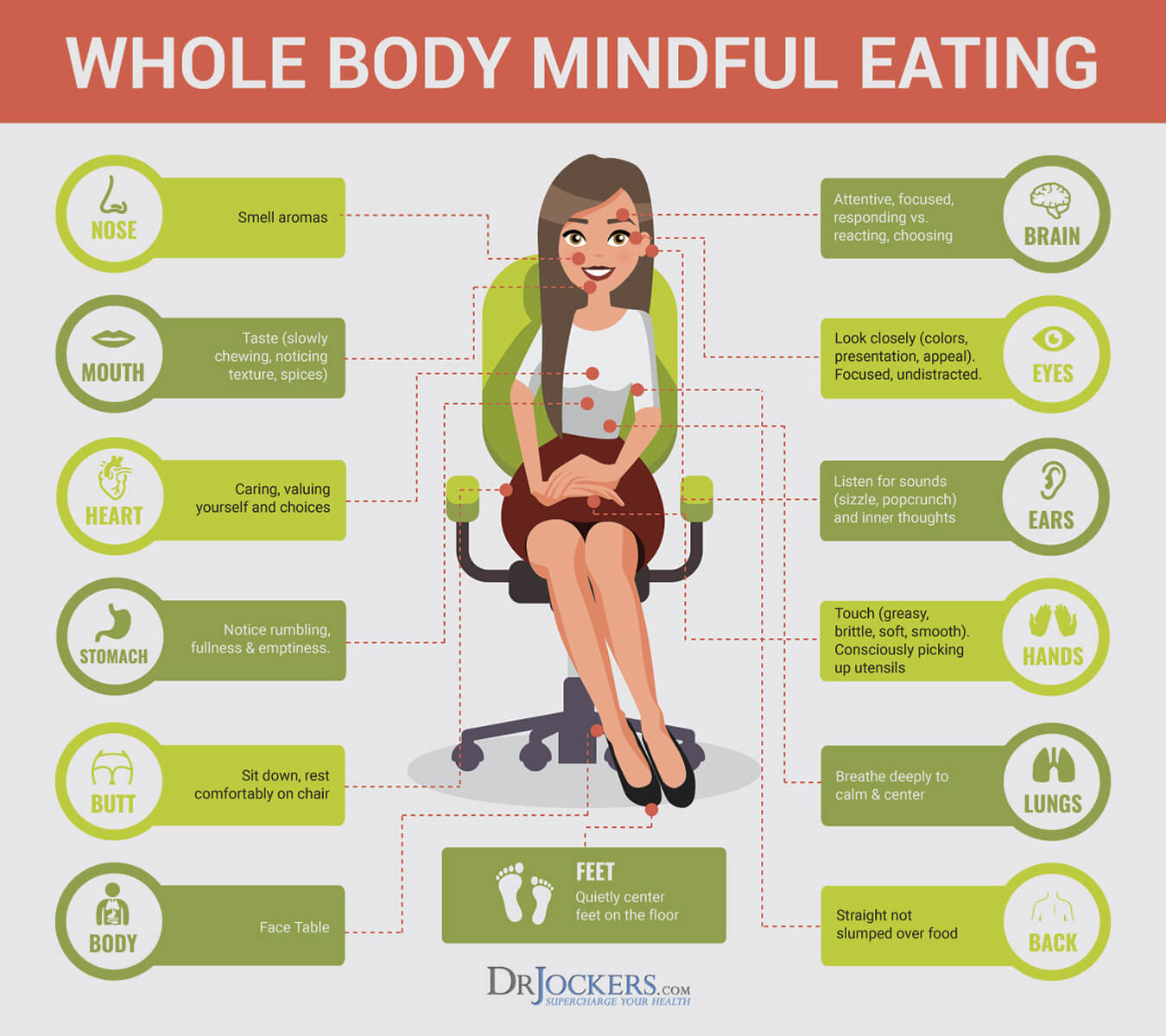
Get Your Protein Needs
When you are practicing intermittent fasting in combination with a ketogenic diet, you may become overly focused on healthy fats. While it’s true, that most of your calories come from fat on a keto diet, high-quality proteins are just as important.
Meeting your protein needs can stabilize your blood sugar, improve your fat burning, stimulate muscle building, improve learning and memory, promote a positive mood, aid your heart health, lower the aging process, improve longevity, and improve bone density. However, too much protein can be problematic as well. It can increase insulin, block ketone production, and activate the mTOR pathway (30, 31, 32, 33, 34, 35, 36).
To meet your protein needs, it is important to consider your lifestyle and goals.
- Weight loss: If you are looking to lose weight and be active, you want to aim for 0. 8 – 1.0 grams of protein per kg of body weight. For example, if you are 160 lbs (72.7 kg), your protein needs are 0.8 – 1.0 g/kg = 58 to 73 grams of protein a day.
- Muscle building: If you are looking to build lean muscle and do resistance training, you should be aiming for 1.0 – 1.6 grams of protein per kg of your body weight. That’s 73 – 117 grams of daily protein for a 160 lbs person.
- Extreme athlete: If you are an extreme athlete, playing high-level of sports, your goal is 1.2 – 1.6 grams per kg. That’s 88 – 117 grams for someone who is 160 lbs.
- Sedentary: If you are sedentary but want to benefit from ketosis and possibly lose weight, aim for 0.5 – 0.8 grams of protein per kg. That’s 36 – 58 grams for a 160 lbs person. While I don’t recommend you to stay sedentary, injuries and certain medical conditions may require you to stay put, and you can use this guide.
Besides consuming enough protein during your feasting window, it is absolutely essential that you are eating nutrient-dense, high-quality protein. The best protein sources include grass-fed beef and lamb, wild-game, wild-caught fish, free-range chicken and turkey, free-range eggs, bone broth, nuts, seeds, beans, pea protein, whey protein, and collagen. Make sure to choose organic to avoid hormones, pesticides, and other harmful toxins.
To learn more about the importance of protein, your individual protein needs, and the best forms of protein, read this article.
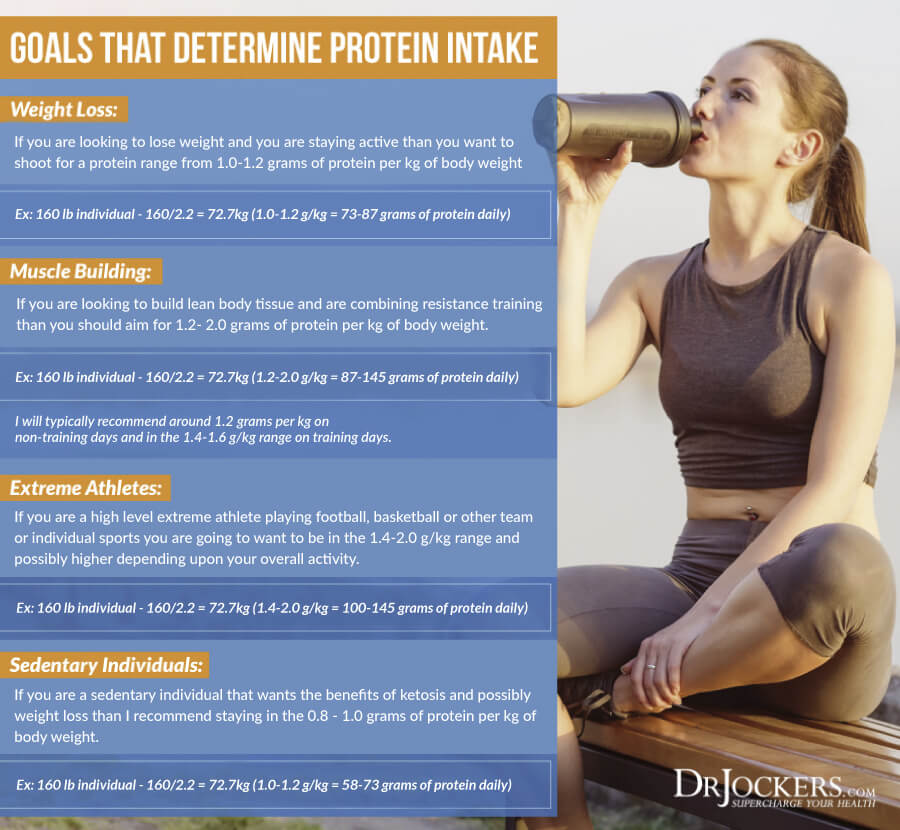
Feast Famine Cycling Expectations
In general, as you adapt to feast-famine cycling, you should feel more mental clarity, better focus, increased productivity, and better overall health. If you are not experiencing these benefits, read this article again to troubleshoot potential problems. Consider your adrenal health and improve your sleep quality.
Make sure that you are keto-adapted. You can test your blood ketones with a ketone and glucose meter. Make sure that you are consuming enough food, but not too much, getting enough protein, minerals, and salts in your diet. Make sure to hydrate well during your fasting window.
You may also read my article on fasting mistakes and what to do about them to ensure that you are benefiting from feast-famine cycling.

Final Thoughts on Feast Famine Cycling
An increasing number of people are interested in fasting for its health benefits. While fasting offers many health benefits, including fat burning, reduced inflammation, and improved energy levels, prolonged calorie restriction also has a downside to it, including potential hormonal imbalance.
This is why feasting is so important to nourish and heal your body through nutrient-dense foods. Feast-famine cycling can help to regulate cell-growth and cleansing pathways, create hormonal optimization, boost lean body tissue development, better inflammation and immune activity, and enhance mental health and emotional well-being.
Follow my tips in this article on how to implement feast-famine cycling to receive full benefits from your fasting lifestyle. Support your digestion with stomach acid support, such as Acid Pro-Zyme or Super Digest HCL, and support for fat-digestion, such Bile Flow Support. Enjoy the full mind-body-soul benefits of feast-famine cycling.
The Fasting Transformation Book
I am super excited to introduce you to the book I have spent the past 18 months putting together. It goes into the most recent scientific research and strategies for implementing intermittent and extended fasting into your life.
I could not be happier with the content in this book that you can review here. It is by far the best book on fasting the world has ever seen and I have read them all! It is now, my great honor to present this to you and I am deeply appreciative of your support!

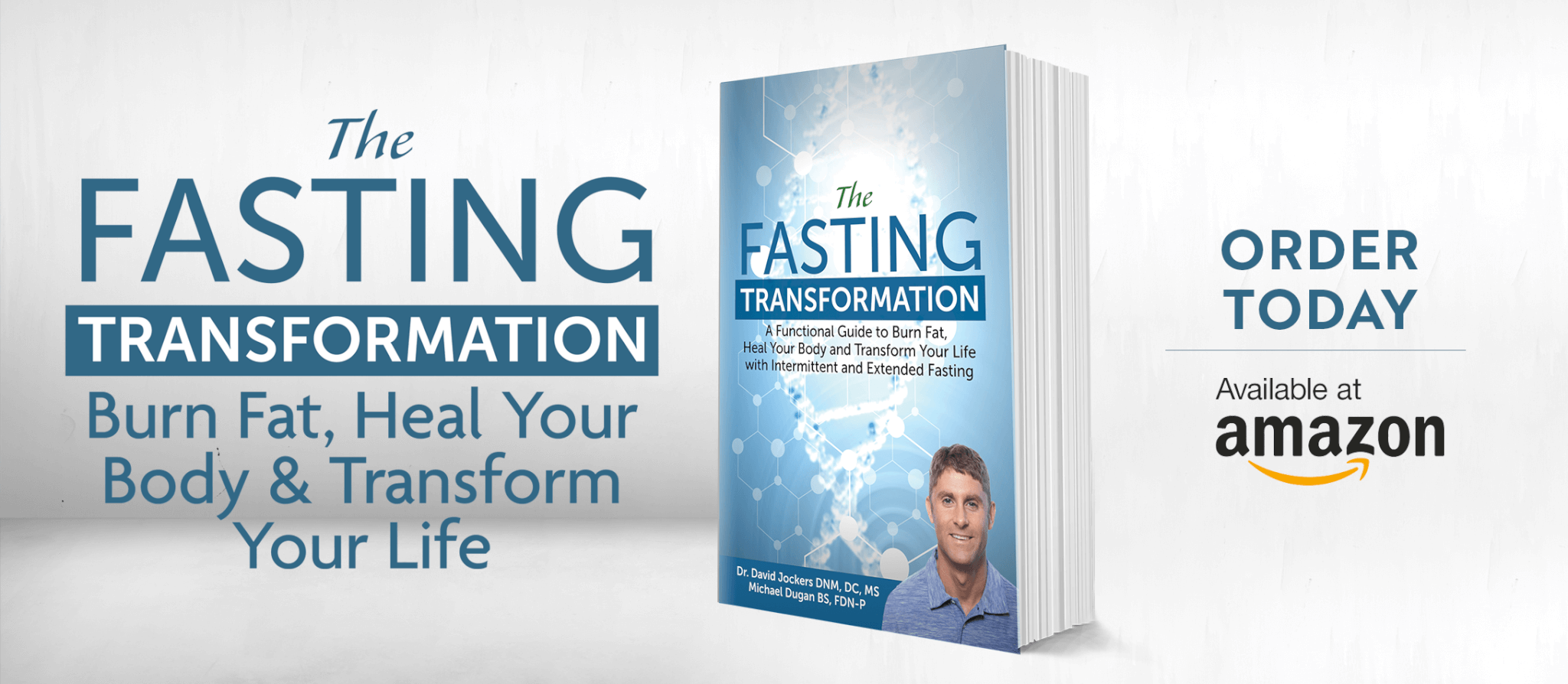




I have learned so much from Dr. Jockers during the couple of years I have subscribed to this website. To my mind, one of the most important messages he’s always reminding us of is that there is no such thing as a one-size-fits-all anything. That includes what foods are included in or excluded from our diets as well as how much we eat of what kind of macronutrients (fats, proteins and carbohydrates); but it also includes what kind of eating schedule we follow.
An important part of what I think of as our eating schedules is the conditions under which we eat, such as chewing our food mindfully and thoroughly, paying real attention to and savoring what we are eating at a dinner table, versus gobbling down a hero sandwich as a “meal” while driving the car and simultaneously arguing with someone on the phone.
Anyone who finds themselves struggling to make meaningful changes in their patterns of feasting and fasting might find it helpful to first give some serious thought to the conditions under which they are eating and possibly make some significant adjustments there. I believe that setting aside time for eating most of our food slowly and as an activity unto itself can be just as important to our health as setting aside time for exercise.
Thanks for sharing Greg and thank you for the kind words, always! I absolutely agree with you. Eating mindfully is a great practice for bringing a healthy synergy to the body and mind. Be blessed!
Dr. Jockers
I recently had some trouble getting started with fasting. I wonder if you’d like to have a look.
About a month ago I started what turned out to be only a 2½-week run of Tue/Fri 36-hour fasts—from dinner the night before until breakfast the day after. I actually felt pretty good—the short-term hunger pangs were surprisingly low-key. The constipation was uncomfortable, of course, but apparently there’re ways to address that.
However, what killed the fasts were their interference with my ongoing weight loss project (a twice-daily ACV recipe). This sounds counterintuitive, I know, but it really was the case.
Here’s a quick chart showing my progress over the last several months:
https://www.dropbox.com/s/q4y61jxjfe1dyfc/Fasting.png?dl=0
[Note: see that sharp spike around the end of November? That was—you guessed it—Thanksgiving ;-)]
Anyway… I’ve marked out in red the brief duration of my fasting project. See how it caused everything to go haywire during that time? And now that I’ve stopped, I don’t seem to be able to regain my previous momentum.
What do you make of it? Can I provide you some more info?
Thanks,
Jeff Bowman
Fairbanks, Alaska
Hey Jeff, While fasting I recommend drinking your apple cider vinegar recipe in the morning. There are some other strategies that you can include into your daily habits to get you over your weight loss stall. Increase the intensity of your exercise training or increase your exposure to cold by taking cold showers can boost your metabolism. This article offers more information on weight loss hacks: https://drjockers.com/weight-loss-hacks/
Very good, thank you.
Keep up the good work.
Thanks,
Jeff Bowman
Fairbanks, Alaska